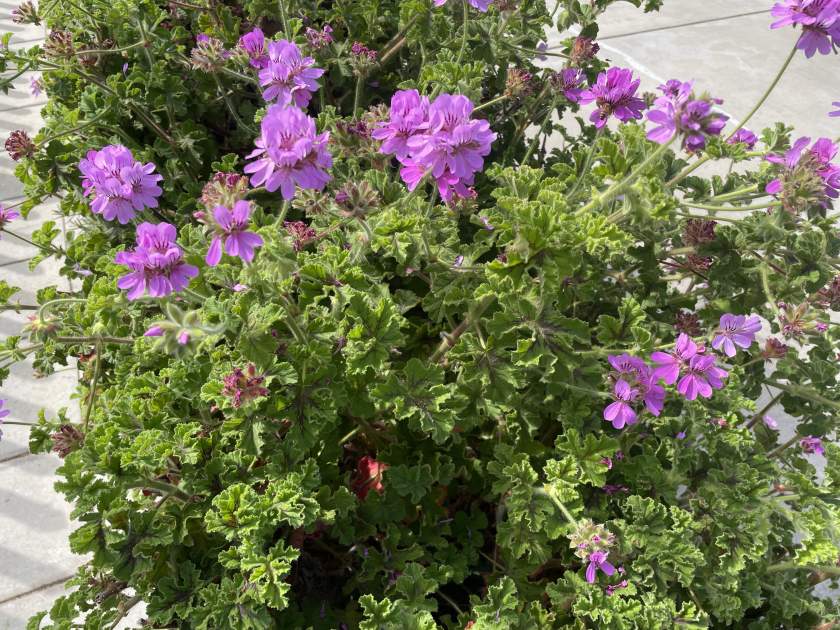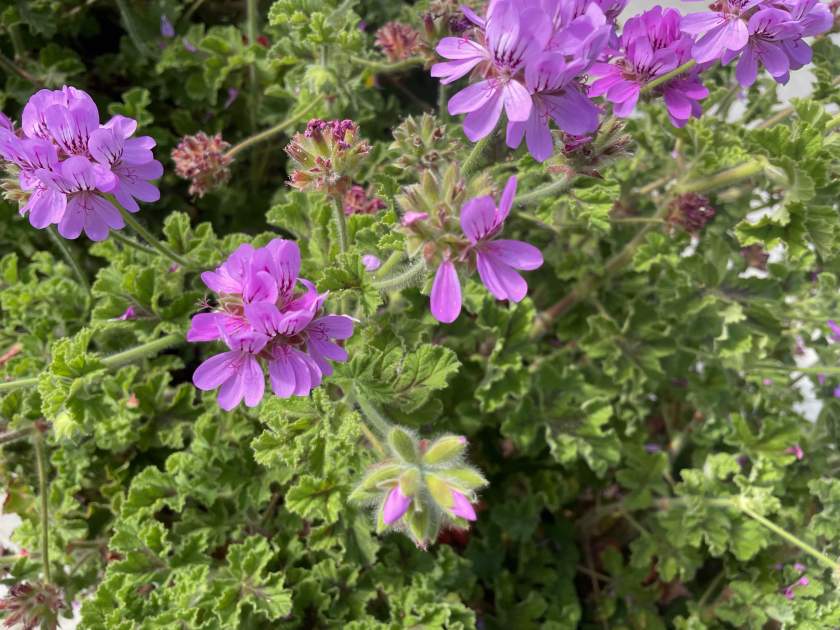Pelargonium capitatum: The Fragrant Rose-Scented Beauty
Family and Background: Pelargonium capitatum, commonly known as Rose-Scented Pelargonium or Coast Pelargonium, belongs to the family Geraniaceae. This species, along with Pelargonium graveolens, Pelargonium tomentosum, and Pelargonium crispum, falls under the subgenus Pelargonium. It is renowned for its aromatic essential oils, which are extracted from glandular tissue rather than its flowers.
Characteristics:
Leaves and Flowers: Pelargonium capitatum is a low shrub that can reach heights of about 100 cm (39 in) and spread up to 1.5 meters across. Its soft stems are adorned with green leaves covered in glandular hairs. When the foliage is brushed against, it releases a rich scent from the essential oils found in the damaged hairs. The fragrance can range from a delicate sweetness to a strong, rosy aroma.
While the flowers of Pelargonium capitatum are not heavily scented, they play an essential role in the plant’s beauty. The flowers come in a variety of shades, ranging from white to various hues of pink and purple. The plant prefers sandy habitats such as sand dunes, but it adapts well to different soil conditions, including hard clayey soil. Although the flowers are not strongly fragrant, they still attract pollinators like bees and other wildlife.
Cultivating Pelargonium capitatum:
Sunlight: Pelargonium capitatum thrives in full sun to partial shade. However, excessive shade can lead to paler leaves and smaller flowers.
Watering: During the active growth period in spring and summer, water Pelargonium capitatum regularly. Allow the soil to dry out slightly between waterings. In fall and winter, reduce the watering frequency as the plant enters its dormant phase.
Soil: For optimal growth, Pelargonium capitatum requires well-draining soil. A sandy loam mix is ideal to provide the necessary drainage and moisture retention.
Pest and Disease Management: Pelargonium capitatum is relatively resistant to pests and diseases. However, it may occasionally face issues with mealybugs and scale insects. If any pests are observed, treat them with suitable insecticidal soap or neem oil.
Propagation:
Pelargonium capitatum can be propagated through stem cuttings or seeds.
- Stem Cuttings: Take a 4-6 inch cutting from a healthy branch’s tip. Remove the lower leaves and dip the end in the rooting hormone. Plant the cutting in a well-draining potting mix and keep the soil consistently moist. Rooting typically occurs within 2-4 weeks.
- Seeds: Sow the seeds in a well-draining potting mix and maintain moist soil. Germination usually takes place within 2-4 weeks.
With proper care, Pelargonium capitatum will flourish, gracing your garden with its captivating foliage and delicate blooms. Here are some additional details about this species:
- It is a shrub that reaches a height of up to 2 feet.
- The leaves are soft and hairy, featuring a green color with a purple underside.
- Pelargonium capitatum produces clusters of small, pink flowers that resemble roses.
- The flowering period spans from spring to summer.
- This plant is native to South Africa, where it is cherished for its aromatic properties.
Embrace the captivating allure of Pelargonium capitatum while ensuring its successful growth and care in your garden. Its delicate fragrance and appealing appearance make it a cherished addition to any landscape.





